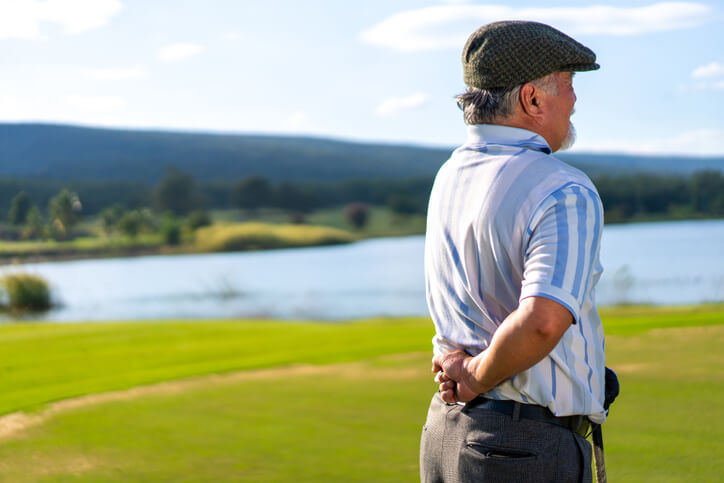In spite of the fact that golf is by no means a rough and tumble sport, a surprising number of golfers develop musculoskeletal problems that require the attention of the physiatrists at Long Island Spine Rehabilitation Medicine. We treat both serious golf injuries, like ligament tears, and pain from repetitive or progressive strain in the back, shoulder, hip, elbows, wrists, and knees.
If your golfing enjoyment has been interrupted by pain related to the sport or your daily routine is no longer comfortable, contact our professionals now for accurate diagnosis and caring, competent treatment. We have a broad range of treatment options and often use them in varying combinations to promote the most rapid relief and most enduring results.
Types of Golf Injuries Our Doctors Successfully Treat
A surprising number of body parts can be injured by the sedate game of golf, including:
Back
Because the back is the major support of the body, several golf injuries result in back pain, some from forceful swings, others from sudden shifts in position during the follow-through. Golfers may suffer from back strain if they are out of condition, have underlying back problems, such as arthritis or stenosis, or if their swings are abnormal.
In any case, they may require treatments for:
- Herniated discs
- Facet joint syndrome (which affects the joints between vertebrae)
- Strains of back or leg muscles.
Shoulder
Shoulder muscles and joints can be negatively impacted by the wear and tear of golf, resulting in one of the following potential injuries:
- Subacromial impingement
- Rotator cuff tears in any of the muscles or tendons
that connect the upper arm to the scapula (shoulder blade)
- Acromioclavicular joint sprain (separated shoulder)
- Labral tear (in the fibrous tissue that lines the shoulder socket)
- Tendonitis, stretching, or tearing of a tendon
- Bursitis, an inflammation of a bursa (a very thin sac that normally prevents friction between bone and softer tissue)
- Adhesive capsulitis (frozen shoulder)
Hip
The hip, like the shoulder, is a major joint and can suffer parallel injuries. Because of its location, these injuries can be extremely debilitating, interfering with walking. Injuries of the hip include:
- Muscle strain
- Bursitis
- Tendonitis
- Labral tear
- Stress fracture
- Hip impingement
- Loose body (bone or cartilage in the joint)
Elbow
The most common golf injury to the elbow is medial epicondylitis (“golfer’s elbow”) which causes pain where the forearm tendons meet the bone of the inner elbow that may radiate to the forearm and wrist. Golfer’s elbow typically occurs in the non-leading elbow. Lateral epicondylitis (“tennis elbow”), which affects the outer part of the elbow, is also common in golfers but affects primarily the leading elbow.
Wrist
Wrist injuries, like other golf injuries, may be caused by improper grip, poor swing technique, an accidental impact of the club with an object (e.g. a tree root) during the downswing, or simply by overuse. Common golf wrist injuries include:
- Wrist tendonitis, usually in the leading hand
- Hamate (carpal) bone fractures
- Wrist sprains
- Ulnar tunnel syndrome (nerve damage)
- Triangular fibrocartilage complex (TFCC), involving cartilage and ligament damage
- De Quervain’s tenosynovitis, a repetitive motion injury below the thumb
Knee
Knee injuries common among golfers include meniscal tears and injuries to the medial collateral ligament. Meniscal tears are very painful and make the knee unstable. They are not only caused by rotating movements but by the squatting posture golfers often assume. Ligament tears can occur when a golfer stumbles or slips in wet grass.
All of the injuries mentioned should be properly diagnosed and treated in order to relieve immediate pain and prevent worse damage. Don’t make the mistake of thinking that if you had a more perfect swing you would never suffer a golf injury since professionals get hurt too.
Contact Our Experienced Golf Injury Doctors Today
All of our professionals are highly skilled and holistic in their approach. We will use advanced diagnostic equipment and a variety of innovative therapeutic techniques to restore your health. In order to accelerate healing, we offer both traditional and complementary methods. Our goal is always to make you pain-free as quickly as possible. Get in touch with our office today.
